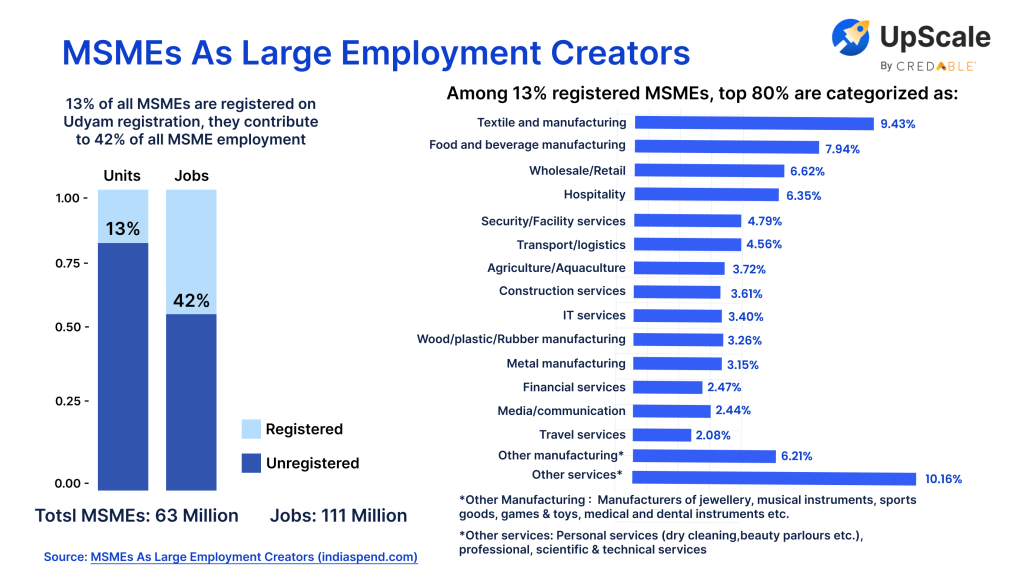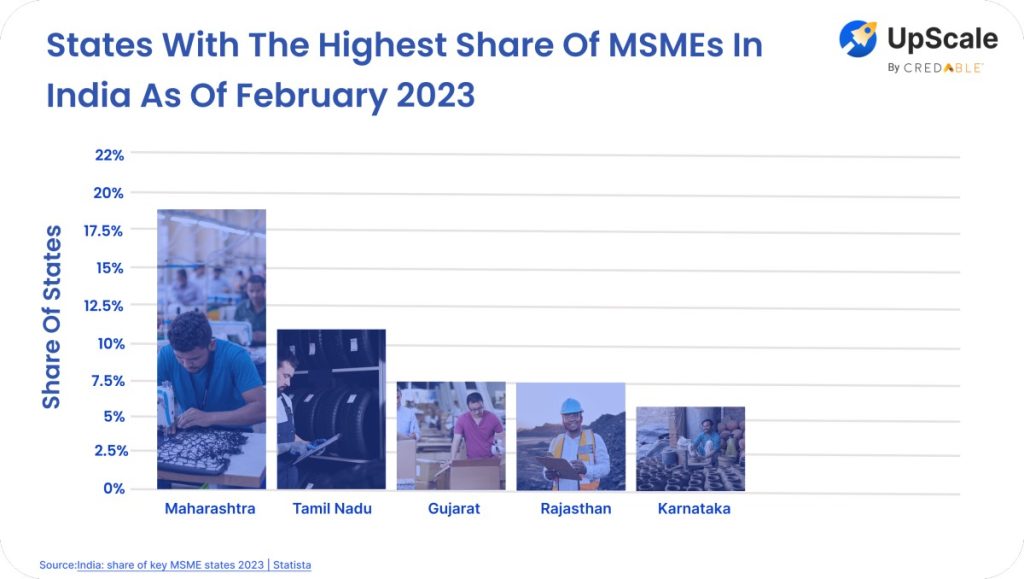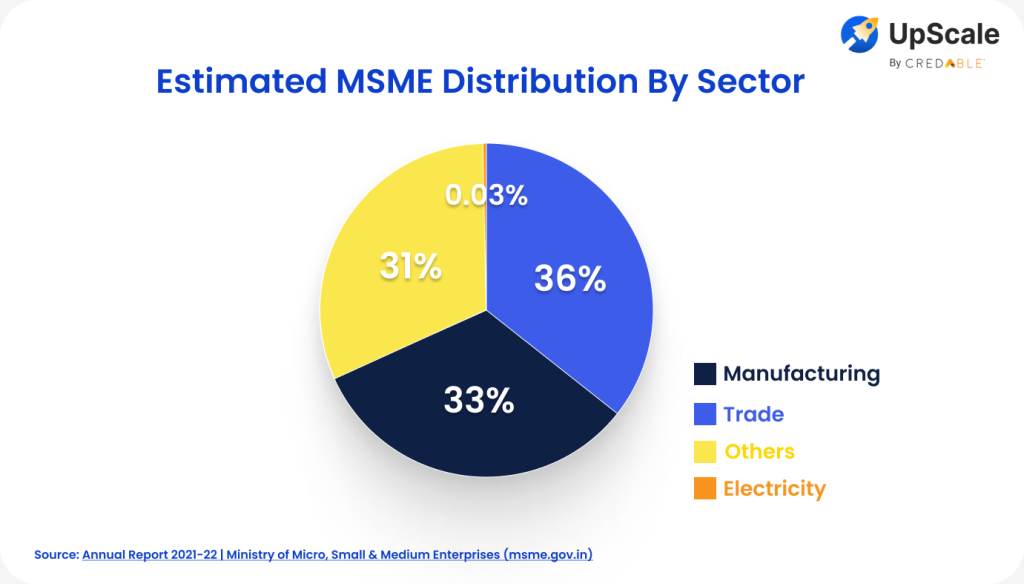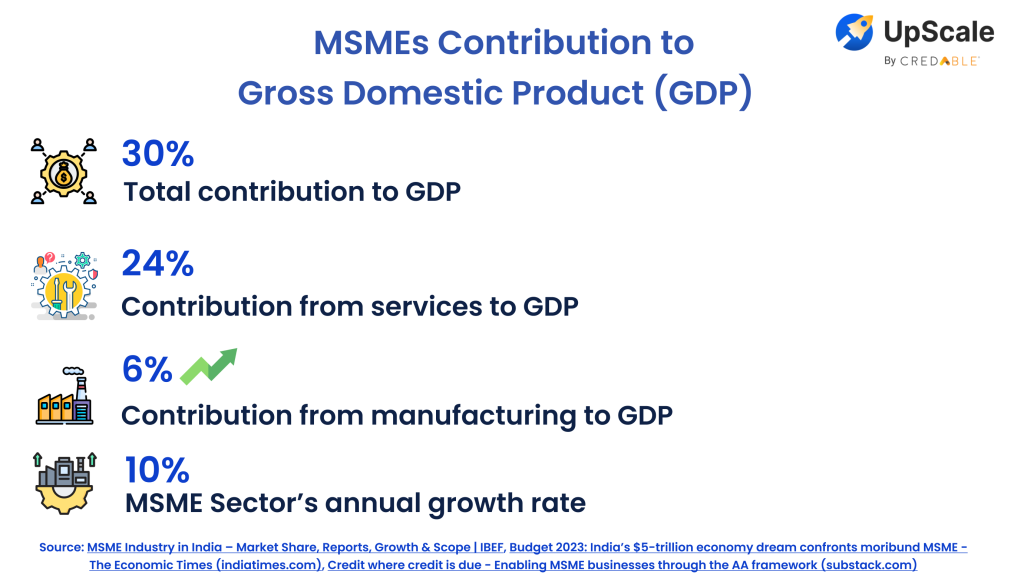India’s ascent toward becoming a formidable global powerhouse is primarily driven by a viable economic landscape. In an era dominated by transformative shifts and digital revolutions—the Micro, Small, and Medium Enterprises (MSME) sector in India has emerged as an undeniable force in propelling economic progress. Today, India is home to 63 million MSMEs in the country, employing over 111 million people in the country.

Over the years, MSMEs have expanded their footprint across various sectors offering a wide range of products to cater to both domestic and global market needs. Rooted in a labour-driven model, the MSME sector is actively creating a multitude of employment opportunities and in turn, steering the nation toward unprecedented opportunities.
As India edges closer to becoming a USD 5 trillion economy, certain states have emerged as the epicenters of MSME activity, playing a pivotal role in shaping the sector’s dynamics. This article delves into the states in India with the highest number of MSMEs, exploring their significance, contributions, growth trends, and the factors that propel their prowess.
MSME hubs in India: States with high MSME density
The breadth of the MSME sector’s influence extends across diverse industries and geographies—unveiling innovation, safeguarding cultural heritage, and fostering socioeconomic empowerment. For instance, Rural Basket is an MSME that connects rural artisans and farmers directly with consumers through an online platform. They offer a range of handmade products and agricultural produce, bringing income opportunities to remote communities.
India’s system of governance leads to different types of economies across the country and this reflects in how MSMEs are operating across different states. States such as Maharashtra, Tamil Nadu, Gujarat, Rajasthan, and Karnataka consistently have a high concentration of MSMEs. The concentration of MSMEs in these states can be attributed to a multitude of factors. A state’s historical industrial background, strategic location, availability of skilled labor, and connectivity play significant roles. For instance, Maharashtra’s legacy as an industrial hub and Gujarat’s proactive business policies have fostered an environment conducive to MSME growth.

According to Statista, Maharashtra leads the charts with 18.71% of the share of MSMEs, followed by Tamil Nadu and Gujarat. In Maharashtra, the MSME sector provides livelihoods for 24% of the state’s entire workforce. Furthermore, the state’s contribution to the overall MSME output in India stands at approximately 13%. A considerable fraction of these enterprises operates informally, outside the official MSME framework, which includes policies and regulations established to boost the sector’s growth. As the drive for formalisation gains traction, the Udyam Portal has witnessed over a million MSME registrations in five states.
Carving out niches: Expertise in key commodities and business types
The MSME sector’s strategic specialisation has driven remarkable achievements, propelling states like Maharashtra, Tamil Nadu, and Gujarat to thrive in various industries. For instance, Maharashtra’s textiles currently account for 10.4% of the nation’s entire textile and apparel production. Tamil Nadu is the largest tyre-manufacturing state in the country, hosting more than 80 manufacturers of automotive components. The state of Tamil Nadu also ranks among the top states in the country’s renewable energy sector, with its substantial contribution amounting to nearly 12% of the overall renewable power generation. Gujarat accounts for 18.14% of the country’s industrial production. This industry-specific dedication has played a pivotal role in propelling these states to the forefront of the MSME arena.
An analysis of MSMEs on Udyam Registration indicated that the leading five sectors with the highest registrations include food products, textiles, apparel, construction activities, and construction of buildings.
India’s Top Export statistics
The top export statistics of India show that Gujarat is the largest exporting state, followed by Maharashtra and Tamil Nadu.
Gujarat accounted for 29.68% of India’s exports in the current financial year (FY 2023-24), Maharashtra accounted for 15.85%, and Tamil Nadu accounted for 9.46%.
The other top exporting states of India are:

Revenue generation, growth trends, and catalysts of MSME prosperity
The states in India that are heavily influenced by the MSME sector have not only fuelled substantial revenue growth but have also emerged as key contributors to the nation’s Gross Domestic Product (GDP). The MSME segment in India makes up roughly 33% of the entire GDP and is expected to make a notable US$ 1 trillion contribution to the country’s export earnings by 2028.

Behind this remarkable growth lies a set of catalysts that drive the expansion of MSMEs.
These key factors include:
- Technological access: Leveraging advanced technology and digital platforms facilitates streamlined operations and market reach.
- Funding availability: The availability of diverse funding options, including venture capital and government schemes—supports business growth and expansion
- Government incentives: Access to government incentives such as tax breaks and subsidies motivate MSMEs to invest and innovate, driving economic progress.
- Expanding consumer landscape : A growing and diverse consumer base presents ample opportunities for MSMEs to cater to evolving market demands.
- Geographical advantage: Strategic location in proximity to key markets enhances distribution efficiency and accessibility.
The prevalence of digital platforms, the ‘Make in India’ initiative, and the emphasis on promoting local enterprises have collectively nurtured the growth of the MSME sector.
Anticipating the road ahead: MSMEs on the horizon
Looking forward, the MSME sector’s future remains promising. The MSMEs’ focus on sustainability, digital integration, and the local-first approach aligns perfectly with the nation’s aspirations. As the economy gradually recovers, the MSME ecosystem in the country is expected to regain its momentum, contributing extensively to India’s growth and development.
